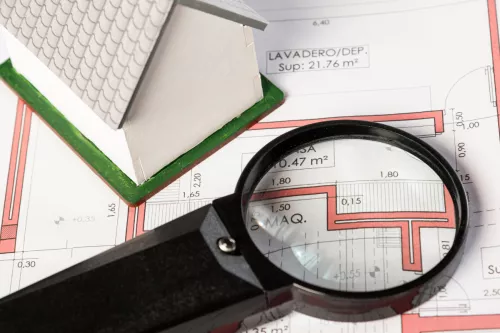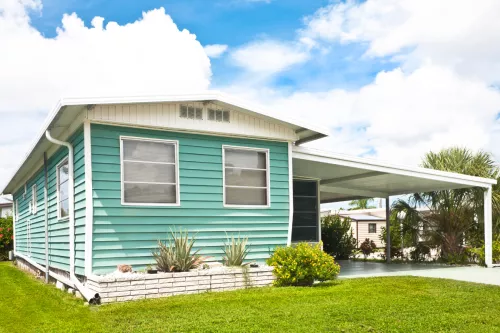If you need to repair some part of your drywall and are concerned about it, you’ve come to the right place. Repairing drywall might seem daunting, but with the right tools, materials, and techniques, you can make your walls look as good as new.
Holes in walls occur, whether by design or accident. Luckily, for both homeowners and renters, fixing both small and large holes in drywall is a fairly straightforward do-it-yourself task. It's among the most gratifying DIY tasks as it's swift and requires only a basic skill level to produce impressive outcomes.
Whether you're dealing with a tiny nail hole or a large section that needs replacement, we will walk you through the process step by step.
How to Fix a Small Hole in Drywall
Small holes in drywall often result from the use of screws, nails, pushpins, and various fasteners typically employed to hang pictures or anchor décor, furniture, or wall mounts. These holes remain virtually unseen while the items are mounted, but if you decide to alter your décor, you'll have to either fill these holes with drywall compound or hang an item of a similar size to conceal the holes in the wall.
Materials and tools to fix a small hole in drywall:
- Patch kit
- Spackling paste
- Putty knife
- Sandpaper
- Paint brush
- Paint
Step by Step:
1. Identify the Damage
Spend some time identifying all minor damages in a particular room or area of your house, so you can address multiple drywall imperfections simultaneously. A simple method to detect indentations is to gently slide your hand across the wall's surface and then use a small piece of painter's tape to mark each hole.
2. Apply Spackle to the Hole, Dent, or Ding
Utilize a putty knife to fill the damaged spot with spackle. Ensure the hole is completely filled, then use the knife to remove any excess. A flawless finish isn't necessary at this stage, and a bit of extra spackle remaining during the drying process is fine.
3. Allow the Spackle to Dry
Resist the urge to hasten this step, even for a small fix. If you sand or paint too early, the spackle might sink in or peel off. Refer to the manufacturer's instructions for the drying time and wait accordingly before moving on.
4. Smooth and Paint the Repaired Area
Employ a sanding block or sandpaper to smooth the dried spackle. If needed, apply paint to finalize the repair for a seamless look. Use any leftover paint if the room was painted recently. If not, collaborate with a local hardware store to find a matching color, using a paint chip if necessary. Accuracy is key here, as a slightly different shade may highlight the repair instead of concealing it.
5. Replacing a Large Section of Drywall
For substantial holes in drywall, typically around one square foot, standard patch kits are insufficient. You'll need to accurately measure the hole and cut a new drywall section to fit. To support this new piece, wooden strips, known as furring strips, are placed inside the wall on both sides of the hole.
Once the new drywall is in place, it must be taped, coated with drywall compound, and left to dry before sanding and painting can commence.
How to replace a large section of drywall
Materials and tools you will need to replace a large section of drywall:
- Drywall saw
- Screws
- New drywall piece
- Joint compound
- Joint tape
- Sandpaper
- Primer
- Paint
Step by Step:
1. Cutting the New Drywall Section
For a large hole, a fresh drywall piece must be cut to size. Measure the hole, then use a utility knife to cut a new drywall section slightly larger than the hole.
2. Reshaping the Hole
Since many drywall holes have irregular shapes, the area around the hole needs to be cut into a regular shape to fit the new patch. Position the new drywall piece over the hole, trace its outline with a pencil, and then use a drywall saw to cut along the traced line, shaping the hole to match the patch.
3. Setting Up Furring Strips
Inside the wall, install vertical wooden strips on either side of the hole. Secure one half of each strip to the existing drywall with screws and a drill, leaving the other half extending into the hole to support the new drywall patch.
4. Fixing the Drywall Patch
Fit the cut drywall piece into the reshaped hole and fasten it to the furring strips with screws. If measured and cut correctly, it should snugly fill the opening.
5. Applying Joint Tape and Compound
Reinforce the patch's edges with mesh joint tape, then cover the patch and tape with joint compound, applying a second layer if needed. Smooth out the compound, feathering the edges for a seamless blend with the wall.
6. Texturing the Repaired Area
If you're dealing with textured drywall, the challenge is twofold: repairing the drywall and replicating the texture. Options include using a wall texture spray or mastering techniques to mimic different textures like comb, popcorn, or orange peel.
7. Drying, Sanding, and Painting
Allow the joint compound to dry as per the manufacturer’s instructions, usually 24 to 48 hours. Sand the area smooth to integrate the repair with the wall. Prime and paint the patched area to match the rest of the wall.
For large, noticeable repairs, consider repainting the entire wall to avoid the patched area standing out, especially if using high-gloss paint. Priming is particularly crucial for larger repairs to ensure the patch doesn’t visually protrude.
8. Hiding Bad Drywall Repair
Sometimes, previous repair attempts are visible and kind of ruin the overall look of the wall. Luck us that there ways of hiding these mistakes:
Apply a Comprehensive Skim Coat

For effective seam concealment in drywall, a level 5 skim coat is highly recommended. This involves a professional layering about an eighth-inch of skim coat compound across the entire wall, effectively covering seams and holes. After this treatment, the seam becomes invisible.
Sand the Visible Seam
Once the seam is taped and filled with joint compound, allow it to dry completely. As it dries and contracts, it becomes ready for sanding. Gently sand the seam until it blends smoothly with the wall's texture.
Choose Dark or Matte Paint
To hide any flaws from the drywall finishing process, matte paint is your best bet. If matte isn't available, opt for a darker paint color. Darker shades reduce light reflection, making the seam less noticeable.
Decorate the Wall
An easy solution to disguise a drywall seam is by hanging wall decorations. Common choices include photographs, tapestries, artwork, and posters.
Apply Primer
Made from polyvinyl acetate, primer is essential for preparing unfinished drywall for painting. Ensure the joint compound is dry and sanded before priming. Avoid applying primer directly over wet joint compound to prevent shrinkage and subsequent cracks in the primer. Choose a primer specifically designed for filling cracks when dealing with drywall seams.
Install Wallpaper
Wallpaper is another effective way to cover any blemishes or errors in the drywall. Before wallpapering over a drywall seam, use joint compound to fill any gaps. Avoid wallpapering over excessive cracks, as they can cause air bubbles to appear beneath the wallpaper, revealing the imperfections.
People also ask
How do I choose the right joint compound?
In most situations, dry and pre-mixed joint compounds are almost identical in function, though the pre-mixed variety involves less preparation. People often opt for the dry mix because it dries faster, is simpler to mix in small quantities, provides enhanced adhesion with mesh tape, and sets harder.
Can I repair water-damaged drywall?
Typically, drywall damaged by water can be fixed by first scraping off all the flaking paint with a paint scraper, followed by sanding the wall with progressively finer grits. Afterward, prime and paint the drywall, and allow sufficient time for it to dry.
How do I match the paint after repairing?
Typically, drywall damaged by water can be fixed by first scraping off all the flaking paint with a paint scraper, followed by sanding the wall with progressively finer grits. Afterward, prime and paint the drywall, and allow sufficient time for it to dry.

 Marcio Vasconcelos
Marcio Vasconcelos





